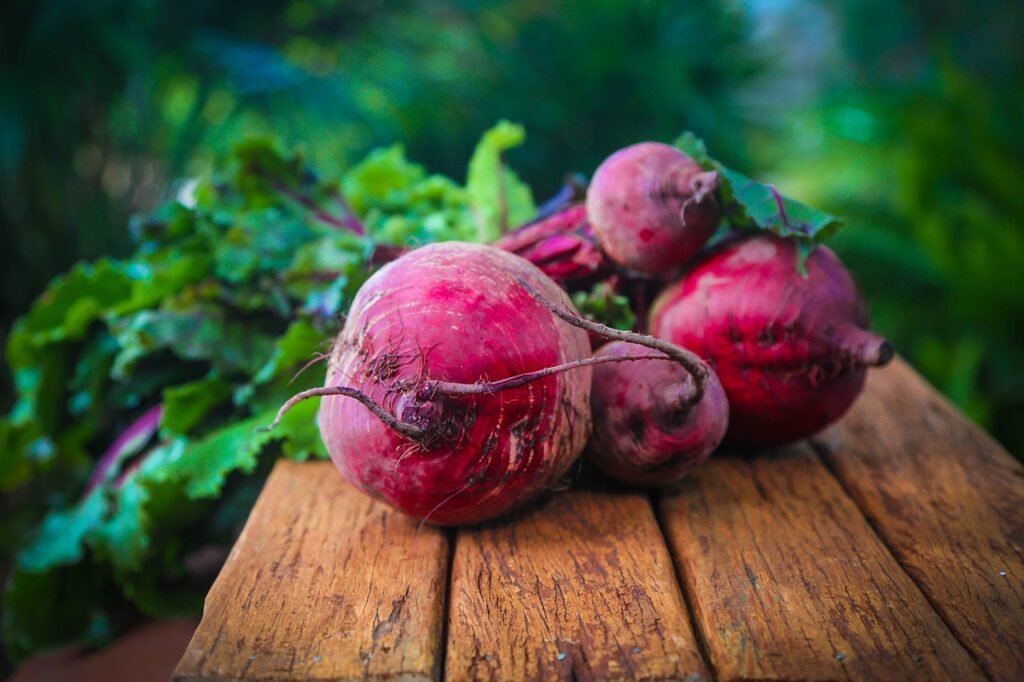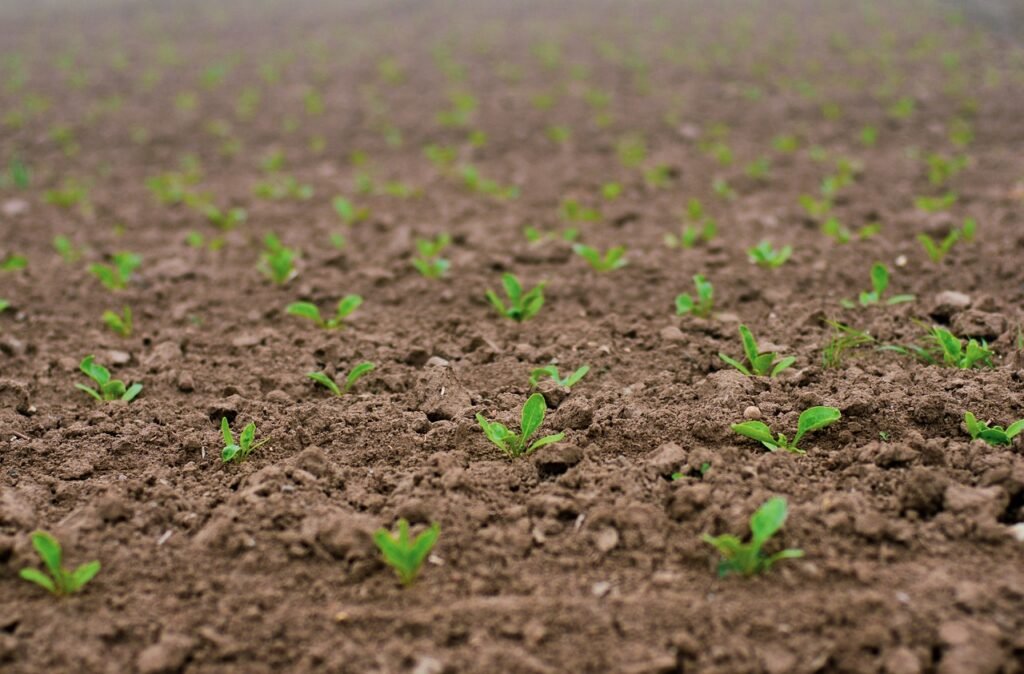Beet Growing Guide From Seed To Harvest To Health Benefits

Curious about growing your own beets and reaping the health benefits they offer? This comprehensive beet growing guide will take you through every step of the process, from choosing the right location to harvesting both the greens and roots.
Learn how to care for your beet plants and explore the various health benefits they provide, such as improving athletic performance and potentially lowering blood pressure.
Prepare to add this nutritious and versatile vegetable to your garden and diet!
What Are Beets?
Beets, scientifically known as Beta vulgaris, are versatile root vegetables that belong to the Amaranthaceae family. They are known for their vibrant colors, earthy flavor, and nutritional value.
Among the popular varieties of beets are Detroit Dark Red, Chioggia, and Golden beets, each offering distinct colors and flavors for a variety of culinary applications.
Beets can be enjoyed raw in salads, pickled for tangy bites, roasted for caramelized sweetness, or juiced for a refreshing beverage. In addition to their culinary versatility, beets are packed with nutrients like folate, potassium, and antioxidants, making them a great addition to a healthy diet.
When growing beets, consider companion planting with crops like lettuce, spinach, or onions to enhance growth and deter pests.

How To Grow Beets?
Growing beets successfully involves careful consideration of planting conditions, soil quality, watering requirements, sunlight exposure, fertilization needs, and pest control measures.
When planting beets, ensure you select a well-draining location with loose soil to promote root development. Sow seeds directly into the ground or start them indoors and transplant once temperatures are favorable. Beets thrive in soil with a pH of 6.0-7.0. Water regularly to keep the soil consistently moist but not waterlogged. Be mindful of providing at least 6 hours of sunlight daily for optimal growth. Consider fertilizing with a balanced fertilizer to support healthy foliage and root growth. Companion planting with herbs like dill and basil can help deter pests naturally.
Choosing the Right Location
Selecting the optimal location for growing beets is crucial for their development, ensuring they receive adequate sunlight, well-draining soil, and sufficient space to produce healthy beetroot.
Sunlight exposure plays a vital role in the photosynthesis process of beets, allowing the plants to convert sunlight into energy essential for growth. Adequate sunlight helps in the development of strong and vibrant beetroot, resulting in higher yields.
The quality of soil directly impacts the nutrient uptake by beets, affecting their overall health and flavor. Well-draining soil prevents waterlogging, which can lead to root rot and stunted growth. Proper spacing between beet plants is necessary to prevent overcrowding, ensuring each plant has ample room to spread its roots and thrive.
Preparing the Soil
Soil preparation plays a vital role in growing beets, focusing on maintaining the appropriate pH levels, optimal moisture content, and nutrient-rich conditions for developing flavorful and nutritious edible roots.
When it comes to pH balancing, beets prefer slightly acidic to neutral soil with a range of 6.0 to 7.0. Ensuring the pH levels are within this range enables the plants to efficiently absorb essential nutrients from the soil.
Effective moisture management is also crucial, as beets need consistent moisture to prevent cracking and promote healthy root development. Enriching the soil with organic matter like compost or well-rotted manure can provide the necessary nutrients for robust beet growth, enhancing their taste and nutritional value.

Choosing a Beet Variety
Choosing the right beet variety to grow in your garden can add both vibrant color and rich nutrients to your table. Beets come in a surprising range of varieties beyond the classic deep red. ‘Detroit Dark Red’ is a staple for its reliable growth and sweet flavor, perfect for both cooking and canning.
For those seeking a milder taste, ‘Golden’ beets offer a sweeter, less earthy flavor with a bright yellow interior that doesn’t bleed like its red counterparts. The striped ‘Chioggia’, or candy cane beet, provides a stunning visual and mild taste, ideal for salads.
Additionally, ‘Bull’s Blood’ is celebrated not only for its edible roots but also for its deep red leaves, which add color to salads. Each variety has its own growing requirements and culinary uses, making it important to choose based on your garden conditions and flavor preferences.
Planting Beet Seeds
Planting beet seeds marks the beginning of the growing process, requiring careful sowing techniques, optimal seed depth, and favorable conditions for successful germination.
- After obtaining quality beet seeds, choose a sunny location with well-draining soil for planting.
- Begin by preparing the soil by removing any debris and loosening it to a depth of about 6-8 inches.
- Sow the seeds 1-2 inches apart in rows spaced around 12-18 inches apart.
- The seeds should be planted at a depth of about half an inch.
- Ensure the soil remains consistently moist, but not waterlogged, to support germination.
- Beet seeds typically germinate best when soil temperatures are between 50-85°F.
Caring for Beet Plants
Proper care and maintenance are essential for nurturing beet plants throughout their growth cycle, involving tasks such as regular pruning, thinning, weeding, and ensuring disease resistance to promote healthy foliage and vibrant root development.
Pruning beet plants involves removing any damaged, diseased, or overcrowded foliage to encourage better air circulation and sun exposure.
Thinning, on the other hand, consists of selectively removing excess seedlings to provide ample spacing for remaining plants to thrive.
Weeding is crucial to prevent competition for nutrients and water, which can hinder beet growth.
Enhancing disease resistance can be achieved through proper spacing, adequate watering practices, and applying organic fungicides or insecticides as needed.

When To Harvest Beets?
Determining the right time to harvest beets is crucial for obtaining optimal flavor, texture, and nutrient content from the plants. Harvesting too early or too late can impact the quality of the harvest.
One of the key indicators that signal the readiness of beets for harvesting is their size. Beets are root vegetables, and their ideal size for harvesting is typically between 1 to 3 inches in diameter. In terms of color, a deep red or purple hue is a good sign that the beets are mature and ready to be picked. Observing the growth stage of the plant, particularly the leafy greens on top, can provide insight into the readiness of the root beneath the soil.
Timing is crucial when it comes to harvesting beets to ensure that you get the best results in terms of taste and nutritional value.
How To Harvest Beets?
Harvesting beets involves careful techniques to preserve the integrity of the roots and greens, ensuring a bountiful yield and freshness. Proper handling during harvest is key to retaining the quality of the harvest.
- When harvesting beets, start by gently loosening the soil around the base of the plant to avoid damaging the roots.
- Use a garden fork or trowel to lift the beets out of the ground, grasping the greens near the root and pulling upwards.
- Trim the beet greens, leaving a few inches of the stems attached to the roots.
To store beets, remove the greens and store them separately in a plastic bag in the refrigerator. The roots can be stored in a cool, dark place like a root cellar or in the refrigerator wrapped in a damp towel to maintain moisture.”

Harvesting for Greens
Harvesting beet greens requires gentle handling to preserve their freshness and tenderness, ensuring that the leaves are harvested at the peak of flavor and nutritional value.
To maintain the quality and taste of the harvested greens, it is crucial to pluck the leaves one by one carefully, avoiding any bruising or tearing.
Timing is key when harvesting beet greens; aim to gather them when they are young and vibrant for optimal taste and tenderness. After harvesting, immediately rinse the greens in cold water to remove any dirt or debris.
Store the beet greens in a plastic bag with a paper towel to absorb excess moisture and keep them crisp in the refrigerator for up to a week.
Harvesting for Roots
Harvesting beetroot involves careful extraction of the roots from the soil, ensuring minimal damage and maximum freshness. Proper handling during root harvest is essential for preserving the beetroot’s quality.
- After gently loosening the soil around the beetroot plants with a fork or spade, grasp the leaves close to the root and pull upward to release the beetroot. Avoid bruising or cutting the roots, as this can lead to moisture loss and compromise the flavor.
- Once harvested, trim off the leaves, leaving about an inch of stem to prevent bleeding. Store the beetroot in a cool, dark place like a root cellar or refrigerator to maintain its crispness and flavor.
- When cooking, roasting beetroot whole enhances its natural sweetness, or try pickling slices for a tangy twist.

What Are The Health Benefits Of Beets?
Beets offer a plethora of health benefits, being rich in essential nutrients like Vitamin C, antioxidants, and fiber, which contribute to improved blood pressure, enhanced liver health, and overall well-being.
The impressive nutritional profile of beets makes them a valuable addition to a balanced diet. Vitamin C not only boosts the immune system but also aids in collagen production for healthy skin. The antioxidants found in beets can help reduce oxidative stress in the body, protecting cells from damage. The fiber content promotes healthy digestion and supports weight management. Regular consumption of beets is linked to lower inflammation levels, which can have a positive impact on various aspects of health.
Rich in Nutrients
Beets are a nutrient powerhouse, containing essential vitamins, minerals, and antioxidants that support overall health and well-being.
These vibrant root vegetables are particularly rich in vitamin C, folate, and potassium, all of which play vital roles in maintaining a healthy immune system, promoting cardiovascular health, and regulating blood pressure levels.
Beets are a great source of fiber, which aids in digestion and helps to maintain a healthy gut microbiome. The antioxidant betalains found in beets have been linked to reduced inflammation and improved athletic performance, making them a beneficial addition to any diet.
May Lower Blood Pressure
Consuming beets may have a positive effect on lowering blood pressure levels due to their high nitrate content, which helps dilate blood vessels and improve circulation.
When the body digests the nitrates in beets, they are converted into nitric oxide, a compound that relaxes and widens blood vessels, allowing for better blood flow. This vasodilation effect can lead to lower blood pressure by reducing the resistance on the walls of the arteries, thus decreasing the workload of the heart. By supporting optimal blood flow, beets play a significant role in improving cardiovascular health. The nutrients found in beets, such as potassium and fiber, also contribute to their overall health benefits when it comes to managing blood pressure levels.
May Improve Athletic Performance
Beets have been linked to enhanced athletic performance, as their nitrate content can improve oxygen utilization, endurance, and exercise efficiency in athletes and active individuals.
Nitrates found in beets play a vital role in dilating blood vessels, which in turn enhances the delivery of oxygen to muscles during physical activity. This increased oxygen flow can result in improved exercise endurance, allowing athletes to push their limits for longer durations. Studies have shown that athletes who regularly consume beet juice or beets as part of their diet experience enhanced physical performance, making beets a valuable natural supplement for those looking to maximize their athletic abilities.
May Help with Digestion
The dietary fiber in beets promotes healthy digestion by supporting regular bowel movements, gut health, and nutrient absorption, making them beneficial for digestive wellness.
Fiber plays a crucial role in aiding digestion by acting as a prebiotic, feeding the good bacteria in your gut and promoting a balanced gut microbiome. This contributes to improved overall digestive function and helps prevent issues like constipation.
The high fiber content in beets can also help in reducing inflammation in the gastrointestinal tract, further enhancing gut health. By including beets in your diet, you can provide your digestive system with the necessary support it needs to function optimally.

May Improve Brain Function
Beets are known for their potential to enhance cognitive function and brain health, attributed to their rich antioxidant content that may protect neurons and support mental acuity.
Their high levels of antioxidants, such as betalains and vitamin C, play a vital role in combating oxidative stress and inflammation in the brain, which are key factors in maintaining cognitive abilities. These antioxidants help neutralize free radicals, reducing damage to brain cells and potentially lowering the risk of neurodegenerative diseases like Alzheimer’s. Studies have also suggested that regular consumption of beets could improve blood flow to the brain, further contributing to enhanced cognitive performance and overall brain function.
May Have Anti-Cancer Properties
Beets contain antioxidants that exhibit potential anti-cancer properties, with studies suggesting a protective effect against certain types of cancer due to their bioactive compounds.
These antioxidants in beets are particularly effective in combating oxidative stress, a common factor in the development of cancer. Research has shown that the compounds found in beets, such as betalains and betacyanins, have powerful anti-inflammatory and detoxifying properties that may help inhibit cancer cell growth.
Incorporating beets into a balanced diet can also support overall health and well-being, offering a natural way to enhance your body’s defense mechanisms against cancer development.
Adding Beets to Your Diet
Cooking with beets brings vibrant color, earthy flavors, and nutritional benefits to a wide range of dishes. This versatile root vegetable can be prepared using various techniques, each highlighting its unique qualities:
- Roasting: Slow roasting in the oven concentrates the beets’ natural sugars, resulting in a tender, caramelized texture that’s perfect for salads, side dishes, or as a snack on its own.
- Boiling or Steaming: These methods soften beets while retaining their vivid color and nutrients, ideal for purees, soups, or to be diced into salads.
- Pickling: Pickled beets offer a tangy, sweet, and sour flavor, serving as a delicious addition to salads, sandwiches, and charcuterie boards.
- Raw: Grated or thinly sliced, raw beets add a crunchy, fresh element to salads and slaws.
- Juicing: Beet juice is a healthy, energizing drink, often mixed with other fruits and vegetables for a nutritional boost.
Beyond these methods, beets can be incorporated into baked goods like cakes and bread for added moisture and natural sweetness. Their leaves, which are also edible, can be sautéed or added to salads, offering a similar taste to Swiss chard. Whether roasted for a hearty dish or pickled for a zesty condiment, beets offer a delightful flavor profile that enhances any meal.
Beet Growing Guide Wrap Up
Embarking on the journey of growing beets adds a splash of color and a bounty of nutrition to your garden. As we’ve explored the various beet varieties and cooking methods, we hope to inspire you to incorporate these versatile root vegetables into your gardening and culinary practices.
To deepen your gardening knowledge and discover more about cultivating various vegetables, we invite you to explore our blog. By subscribing to our newsletter, you’ll gain access to a treasure trove of gardening tips, delicious recipes, and comprehensive growing guides. Join our community at Garden Guys, and let’s cultivate a thriving garden together, enriching our tables with the freshest, most flavorful produce.
Frequently Asked Questions
To start growing beets from seeds, prepare a well-draining, sandy soil that is rich in organic matter. Sow the seeds about 1 inch deep and 2 inches apart. Keep the soil moist and within a week or so, the seeds will germinate and sprout.
Beets are typically ready for harvest 8-10 weeks after planting. You can start harvesting when the beets are about 2-3 inches in diameter, but they can continue to grow up to 4-5 inches in diameter without losing their flavor.
Beets are a nutrient-dense root vegetable that offers a variety of health benefits. They are high in fiber, folate, and vitamin C, and have been linked to improved blood pressure, digestion, and brain health.
Yes, it is important to thin out your beet seedlings to ensure proper growth and development. Thinning means removing some of the seedlings to provide enough space for the remaining ones to grow and mature.
Beets require consistent moisture, so it is important to water them regularly, especially during dry spells. Aim to water your beet plants at least once or twice a week, depending on the weather and soil conditions.
Yes, beet leaves, also known as beet greens, are edible and highly nutritious. They are rich in vitamins, minerals, and antioxidants, and can be cooked and eaten just like any other leafy green vegetable.



